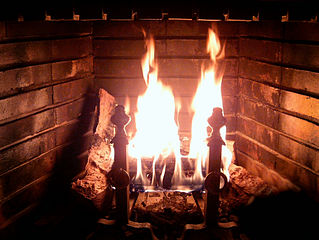Wood-burning restrictions in California’s eight-county San Joaquin Valley as of Mar. 1, 2020 were lifted. Though the burning of wood in residential fireplaces, fire-pits, woodstoves, etc. post-Feb. 29, 2020 is allowed, it is however, as the San Joaquin Valley Air Pollution Control District (Air District) has stated, discouraged.
And, for good reason, obviously: Fine-particulate-matter pollution or PM 2.5 (particulate matter less than 2.5 micrometers in aerodynamic diameter – about one-twentieth-to-one-thirtieth the width of a human hair) in the region still is very much problematic during colder climes here, despite recent and marked progress relating to the reduction in this pollutant-emission being made.

“In 2019, the District adopted amendments to Rule 4901 to lower the ‘No Burning Unless Registered’ and ‘No Burning for All’ thresholds in the three counties with the biggest air pollution challenges: Madera, Fresno and Kern. The lower threshold led to more frequent health-protective wood burning curtailments in these ‘Hot Spot‘ counties during the 2019-2020 winter season,” the Air District in a Mar. 3, 2020 press statement reported.
The area’s unhealthy cold-weather air, however, isn’t tied exclusively to emissions released from the stationary sources. Mobile sources and what are referred to as area-wide sources contribute as well. But, it is the stationary-sources sector that this time of the year, appear to grab attention most.
The fallout from this pollutant is considerable. In Feb. 2016 in “Our sad, sorry air: What have we done; what can we do?” the message is frank: “In the Valley each year, it is estimated that as many as 800 early deaths can be tied to fine particulate matter pollution (PM 2.5) and/or the ultrafine version of the same stuff. For all those living here who have a loved one who is directly affected, they are, more than likely, acutely aware of the scope and seriousness of the problem. Alternatively, for those residing in these parts whose health is not now adversely impacted or is oblivious to the ravages around them that deleterious air is responsible for, they, more than likely, do not have their minds preoccupied with matters related to polluted winter Valley air.”
Emphasizing the critical need to do something extraordinary to turn the tide, that is to say to reverse course, to put the air in the Valley, not just in winter but throughout all times of the year, on a corrective trajectory, Fresno-area critical-care physician and pulmonologist Dr. Michael Peterson in a May 8, 2014 editorial in The Fresno Bee expressed: “We can invest first in our downtowns and existing neighborhoods and encourage healthier transportation choices. We can link more places where people live to where they work, go to school and play, with public transportation and biking and walking trails. … Choosing a business-as-usual path would mean more air pollution, more illness and premature death, and millions of dollars lost every year to medical expenses and days lost from school and work.”1
Meanwhile, on the PM 2.5-pollution-reduction front, way back on Dec. 22, 2012 in “EPA, Valley Air District PM 2.5 standards separate and unequal,” it was explained the Air District just two days prior approved a daily PM 2.5 health standard of 20-micrograms-per-cubic-meter-of-air for the entire eight-county San Joaquin Valley. Six days earlier “The U.S. Environmental Protection Agency (EPA) on Dec. 14, 2012 announced it had adopted a national ambient air quality standard for annual fine particle pollution … of 12 micrograms per cubic meter of air.” It is important to note that the respective target dates in the Valley for the two different and separate standards, were 2019 and 2020.
In regard to this it was written: “As a less stringent PM 2.5 Valley standard compared to that of the EPA’s, and even though the federal agency’s standard is for annual ambient air quality of PM 2.5 versus a daily air standard in the Valley, it is difficult to see how the entire Valley will be able to meet the more stringent federal standard.”
Irrespective of what all contributes to the Valley’s unhealthy wintertime air the bottom line is that more must be done, as Dr. Peterson put it, “to protect public health.”1
Question is: Will the good doctor’s words be followed through on to once and for all get the wintertime Valley air to a state of healthy repair?
Hopefully.
Notes
- Dr. Michael Peterson, “Fresno needs a new path to better health,” commentary, The Fresno Bee, May 8, 2014 edition

This post was last revised on Apr. 8, 2020 @ 6:52 a.m. Pacific Daylight Time.
